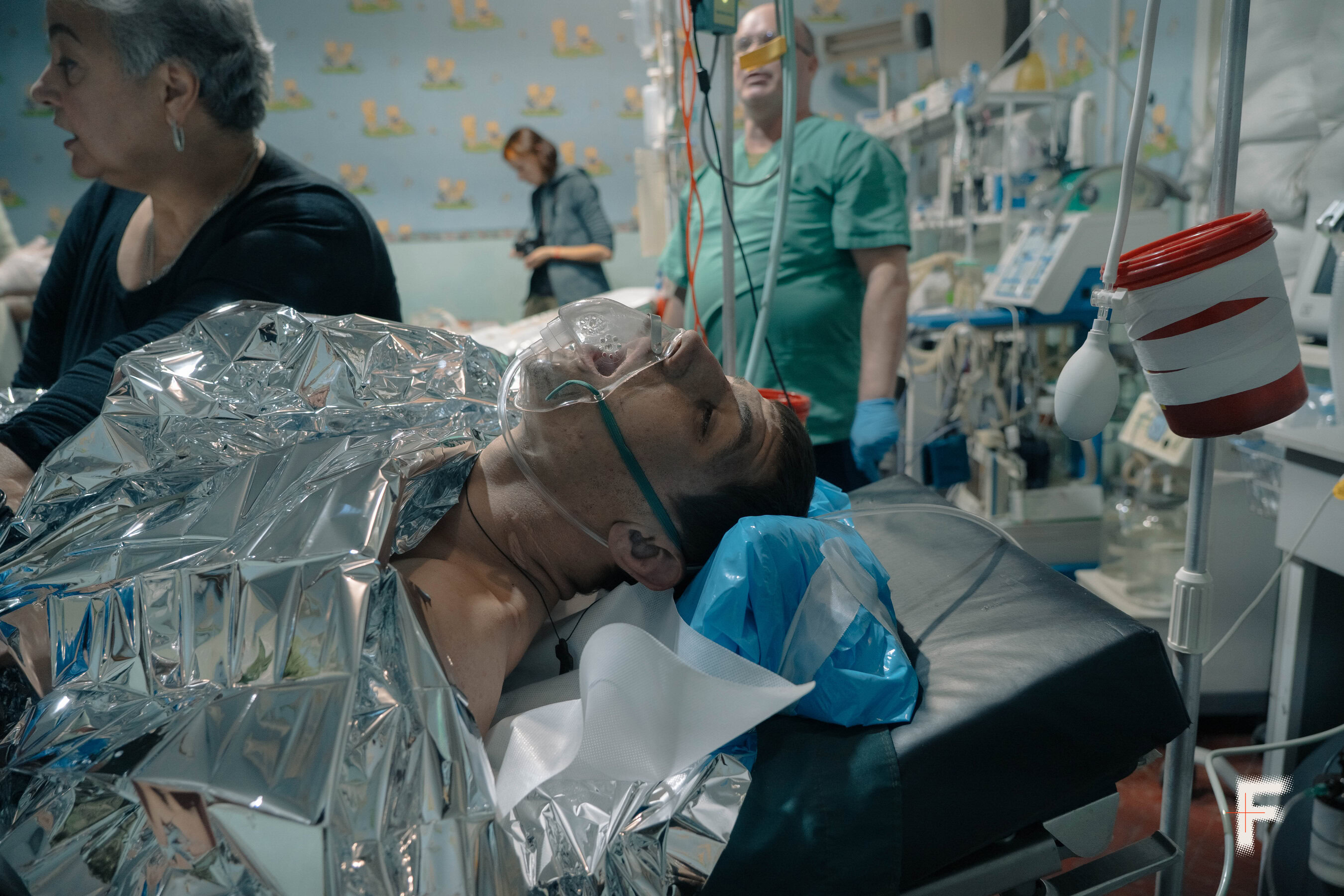

Where lives are saved: a stabilization point in the Donetsk region
The calm at the stabilization point suddenly ends, as if someone flipped a switch. Just moments ago the medics relaxedly drank coffee with snacks, went out for a smoke break, and scrolled through social media, the corridor was filled with the stamping of feet, shouts of “seriously wounded!”, and groans of the wounded. The doctors instantly put on protective gloves and got involved in saving lives. Frontliner reporters observed this work that has became routine for them.
The stabilization point of the medics of the 93rd Motorized Rifle Brigade “Kholodny Yar” is located in one of the frontline towns. The wounded are brought here mainly from the Kostiantynivka direction. The atmosphere of the stabilization point is quite typical: children’s drawings adorn the walls, medical supplies are stored, bandage rolls are available, and a chessboard with figures is arranged in the corner of the “reception room”. The shift of the medical teams is coming to an end, and they are about to be replaced by new colleagues.
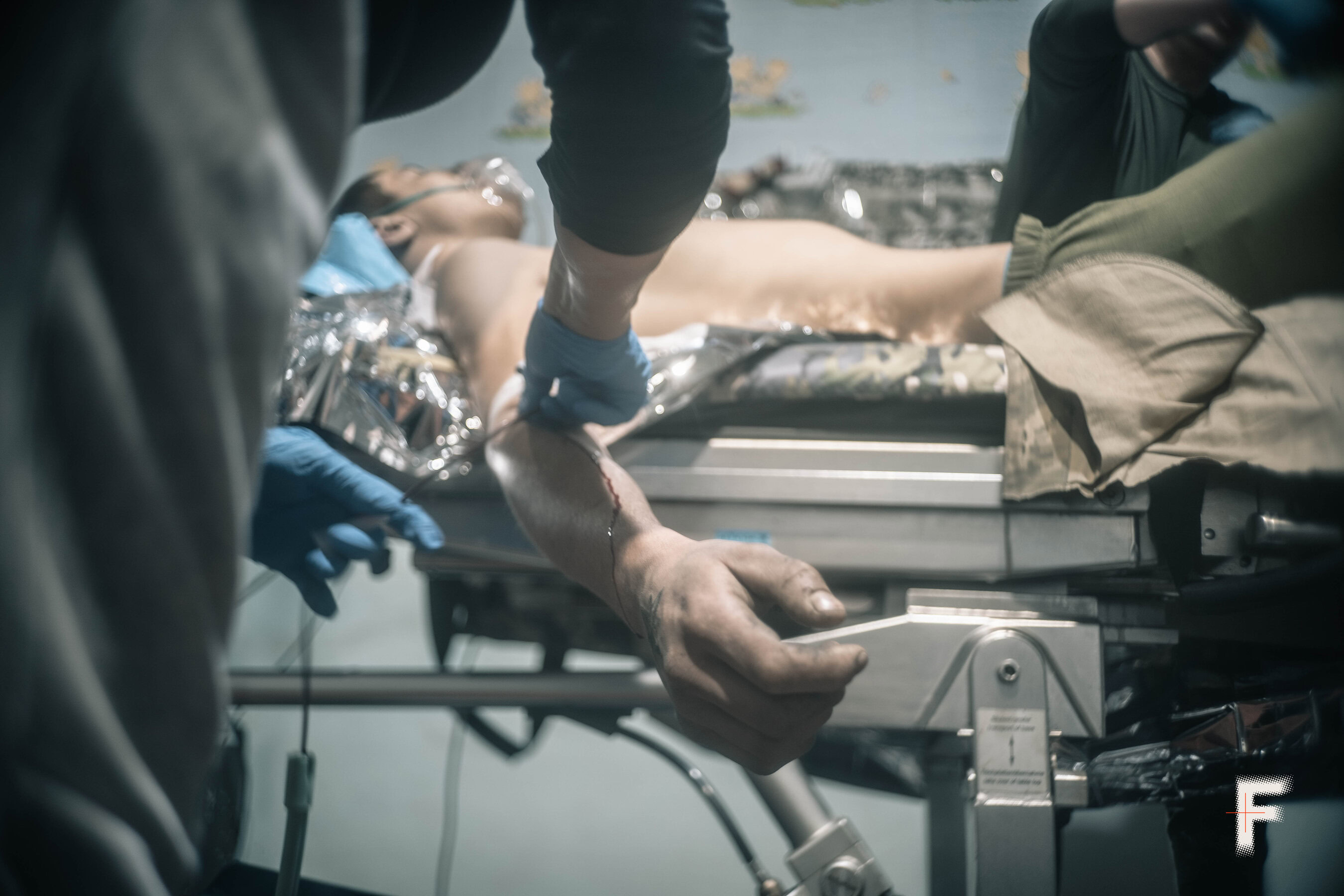

Threat from the Sky and the Ground
A group of soldiers is dragging one wounded man on a thermal blanket. He has a traumatic amputation of his foot. He screams and groans. The other injured man is lightly wounded; he walks on his own. He sits down on a bench and begins to undress himself. Small fragments cut his back and legs. The seriously wounded man was caught in a trap on the ground, and the lightly injured man was attacked from the sky.
Both wounded men are infantrymen of the Alcatraz battalion, formed from former prisoners.
There is a separate room for patients who are seriously wounded. The wounded man is connected to oxygen, given an injection, and his bloodied clothes are cut off. Personal belongings are put in a separate bag, which is then given to him. Among the things is a small icon.
The patient has a waxy face. He could not be evacuated immediately after getting wounded. The doctors remove some of the tourniquets, treat and bandage the stump. The treatment of the wound lasts about an hour. Despite the injection of painkillers, the patient does not seem to be getting any better. He screams:
“Just knock me out! My God…”
He is promised that he will be taken to the hospital right away, where the painkillers will be more powerful, and he will soon feel better. He just needs to be patient a little longer.
“What is your name?” the doctor asks, trying to distract attention (the fighter’s personal data, including the circumstances and nature of the wound, have already been entered into the document on the tablet by that time).
“Pa-sha…” he answers with effort.
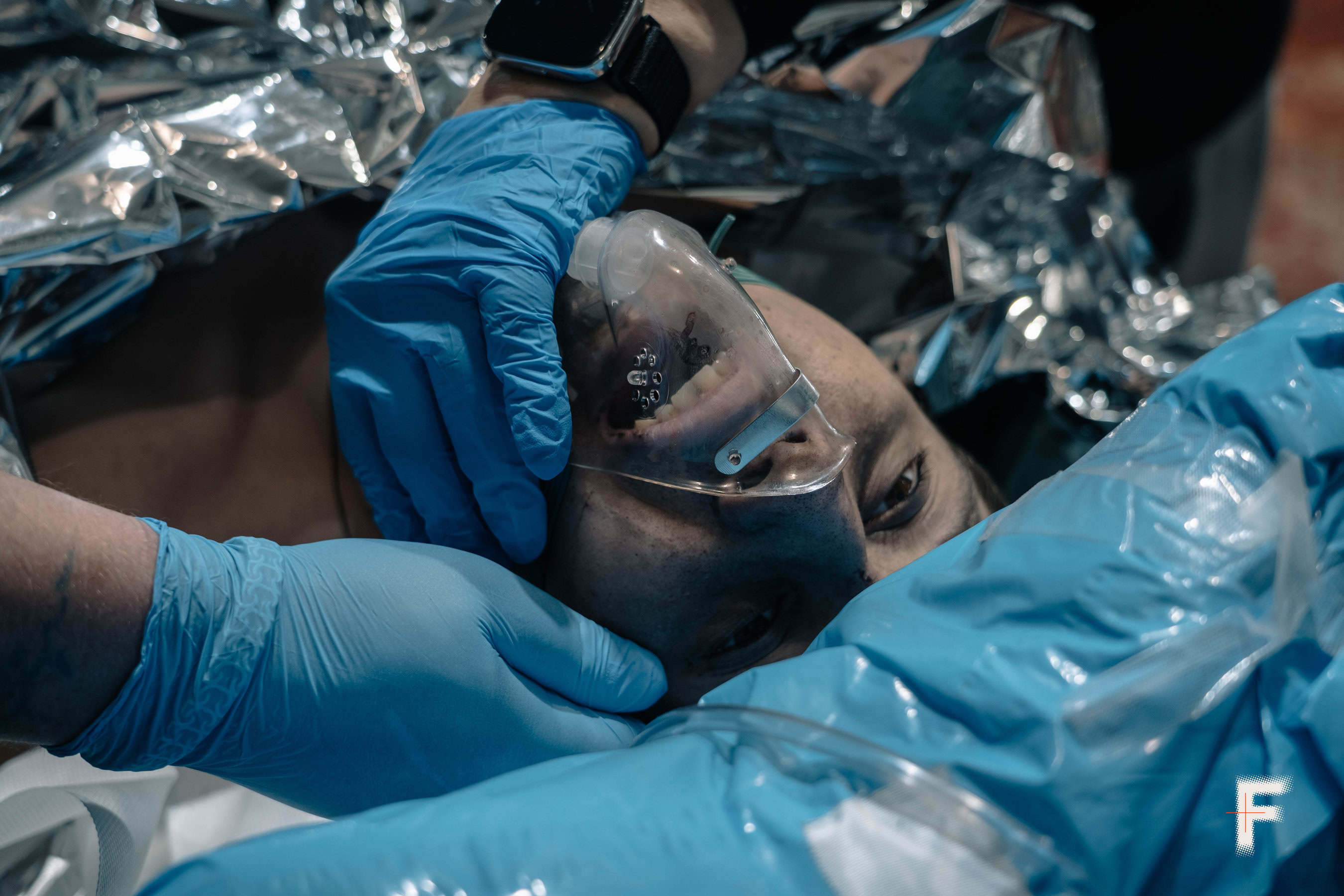

In the next room, meanwhile, they are treating the minor wounds of his comrade with the call sign “Shakh.” He is also given clean clothes, and he leaves the room in civilian clothes. He tells about the circumstances of the injury. Pasha, his comrade, stepped on a mine, probably a “petal,” when they were going to pick up another wounded man:
“They were resuscitating the guy, taking him to the evacuation. And he stumbled a little, stepped on… There were leaves there, and you couldn’t see. And he was injured. I gave him first aid, bandaged him, and made him a crutch, and he continued walking,” the infantryman recalls.
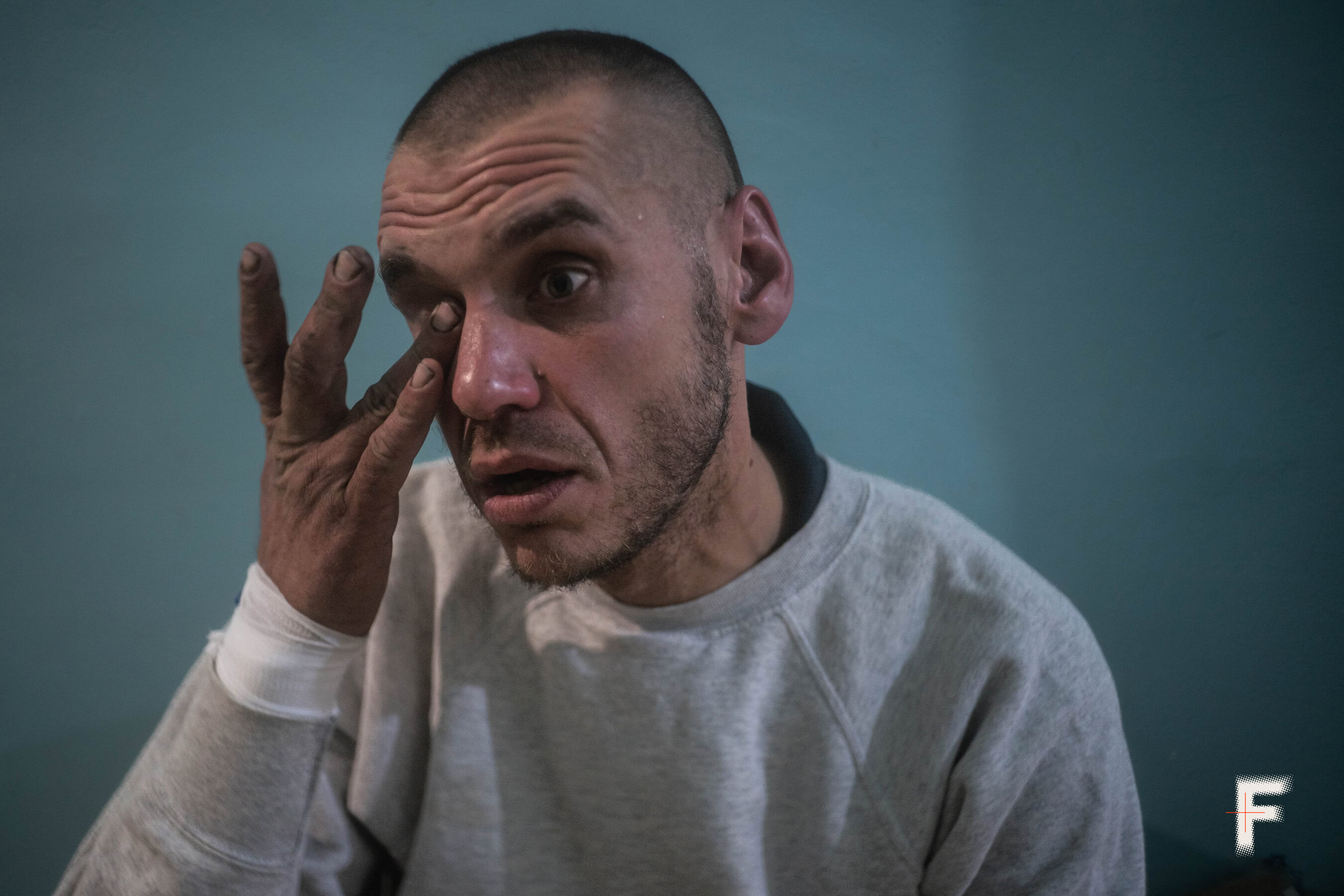

The wounded serviceman, whom they were following, was dragged by “Shakh” himself on a stretcher. At a certain point, they were spotted from the sky, and the FPV attacks and drops began:
Of course, they noticed us; there are three of us walking in a group, one limping, and the other pulling the third one. And the hits began, very precise hits, they come out of nowhere, you can’t hear them in advance, you can’t control them. And after that, I lowered my wounded comrade down, I put a bulletproof vest on him, a helmet, covered him with a blanket so that the FPVs from above wouldn’t see him,
He pushed another wounded man into a pipe that passed under the asphalt and hid there himself. He covered the holes with earth as best he could. They spent the whole night in the pipe. In the morning, he climbed out, saw that the evacuated wounded man had thrown off his blanket and ammunition, and moved away from the stretcher on which he was lying:
“I examined the blanket, and there were no traces of the hit. I don’t know, I found him dead in the morning. I checked his pulse; he was dead, cold,” the soldier says.
In the morning, Shah went for help, brought two more people who helped pull out the wounded comrade.


At the moment when the patients are ready for the next stage of evacuation, a new shift arrives. The seriously injured person is accompanied to the hospital by an anesthesiologist to monitor his condition. The floor in the office is washed, and the operating table is covered with clean, disposable sheets. In a few minutes, the office will be ready to receive the new patients.
“There are fewer patients because there are fewer people.”
Surgeon Andrii Mosentsev, call sign “Bies”, talks about the injury from the perspective of a doctor:
“The condition is serious due to blood loss, and because the evacuation took a long time, as there was no way to do it faster. I don’t know for sure, but according to his colleagues, the tourniquet was applied more than 12 hours ago, so almost a day has passed. The tourniquet was left on because there is a fracture there, and there will be bleeding. They just bandaged it, treated it, provided first aid, and gave painkillers,” says the surgeon.
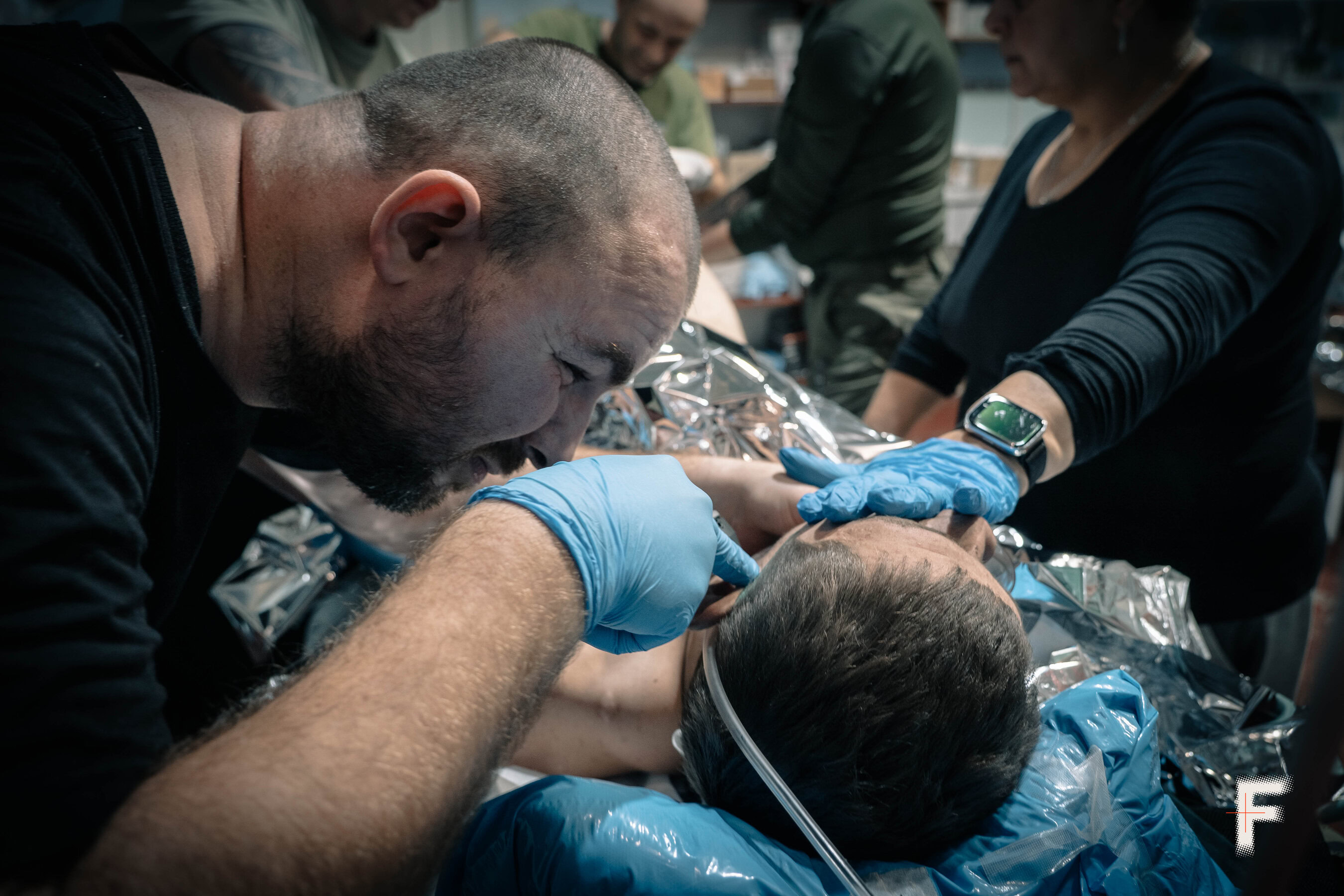

He explains: the painkillers did not work completely because the injury was too severe. If there are no additional complications, the recovery will take about two months.
Before serving in the army, Bies worked at the 9th hospital in Zaporizhzhia. He signed a contract a week before the full-scale invasion, because he understood that hell would soon come. During his service, the nature of the injuries that he had to deal with changed:
“If in 2022 it was more contusions after mortar or rocket attacks, now it’s shrapnel from FPV,” the doctor explains.
The headquarters also sends subordinates from other units; sometimes, civilians end up here. And once, the medics even had to assist a wounded enemy who was taken prisoner. The number of wounded who pass through the hands of medics per day depends on several factors, including the number of battalions operating in the area, the intensity of hostilities, and other variables. During his years of service, Andrii has seen patients from zero to 120 per day. However, there is now a decrease in the number of wounded:
We have fewer people – fewer people to hit, less than 300. But it’s not because things have gotten better, it’s because there are fewer people,


Bies’s and his colleagues’ shift has come to an end. After exchanging jokes and hugging with the colleagues who came to relieve them, the team heads off for a short rest. Silence reigns in the corridors of the stable for a while again.
Text: Olena Maksymenko
Photos: Marharyta Fal
Adapted: Olena Sharhorodska
Read more — Gun ‘Milf’ gives the occupiers hell – the 80-year-old M114 howitzer still firing near Pokrovsk

